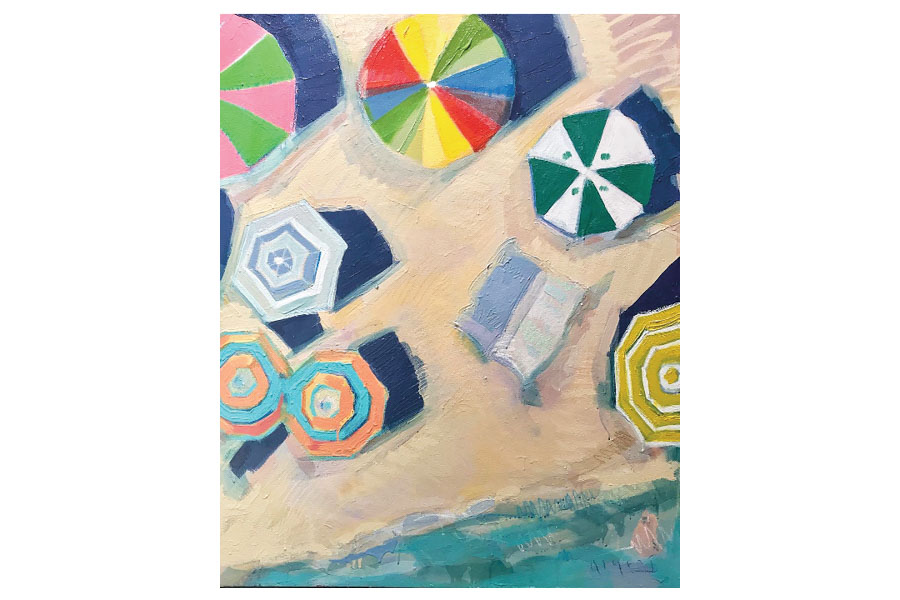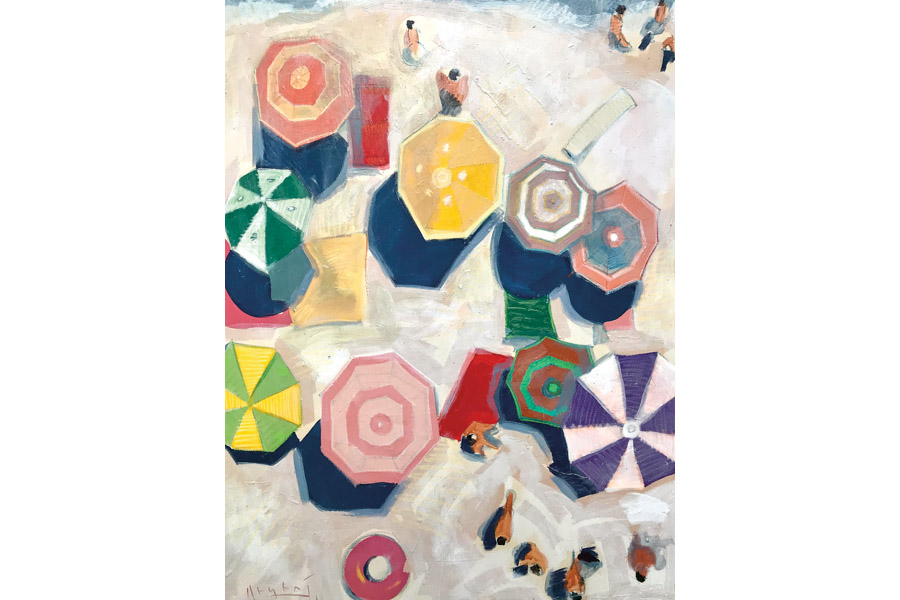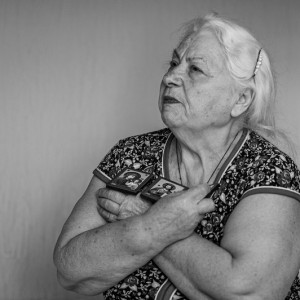Down to his bones and until the day he dies, Tim Jaeger will always be a Kentucky boy—and he’ll slam bourbon and paint roosters with the best of them to prove it (the painting of the male chicken being a time-honored tradition among Kentucky menfolk, as is the shooting of corn liquor). But while a childhood in Paducah has long remained a source of artistic inspiration, after 20 years in Sarasota, the artist finally embraces his Florida side with a series of paintings dedicated to the beaches of his adopted hometown. “I’ve spent the majority of my life in Florida now and it’s a big part of my identity,” he says. “This is where I live, and I’m proud of it.”
Entitled Shades, Jaeger’s new series of unconventional and human-centric landscapes captures local-famous area beaches from a birds-eye perspective, where beach-goers, individuals and groups, form a sort of organic map of detritus and diversion as they position themselves on the sand in a natural social hierarchy. Here, a group of high-schoolers forms a semicircle while they trade cigarettes and dirty jokes; there, a loving (or lusting) couple steals off to the side for a more private paradise. Somewhere in the middle, there’s the guy in the speedo, spread-eagled shamelessly for all to see. Jaeger captures the scene in all its sun-kissed glory by sending a drone over the crowded beaches on holidays, taking panoramic pictures he will later scour for the perfect representation of the day, injecting something of a documentarian note from the very beginning of his process.

And for Jaeger, process brings progress, with each successive piece in the series advancing the central idea while honing the technique. Like a controlled experiment, boundaries and expectation pave the way to exploration. But it takes discipline—Jaeger completed six canvases for the new series before he even knew it would work, but that in itself represents an integral step in the evolution of the series. “It’s important to make bad paintings,” he says, and each piece remains a part of the series—Jaeger sees no reason to hide the signs of his journey, especially when that journey is also one of artistic self-discovery. Early attempts found Jaeger frustrated by the straight lines demanded by geometric pavilions and umbrellas—until he decided to just let go. “I gave up trying to make perfect lines,” he says, instead putting faith in his own mark-making, finding something perhaps less exacting but somehow more accurate. And so the artist continually perfects the process, adjusting as necessary and charting a slow but steady arc across the firmament of his mind, before arriving, maybe, someday, at his destination.
From Jaeger’s aerial vantage, the beachgoers themselves become but blobs of color, mostly obscured and overshadowed by the myriad and multicolored umbrellas, tents, coolers and the like. Yet the greater pattern remains—each stranger connected to the other through purposed distance. That’s the real human element, says Jaeger, more than the lost faces or unmentioned names, but the geographical decisions that belie social realities born of vulnerability, confidence and everything in between. “The way that we feel about each other, I like to think, changes when we walk out onto the beach,” he says. “There’s something special about that. Almost spiritual.”











